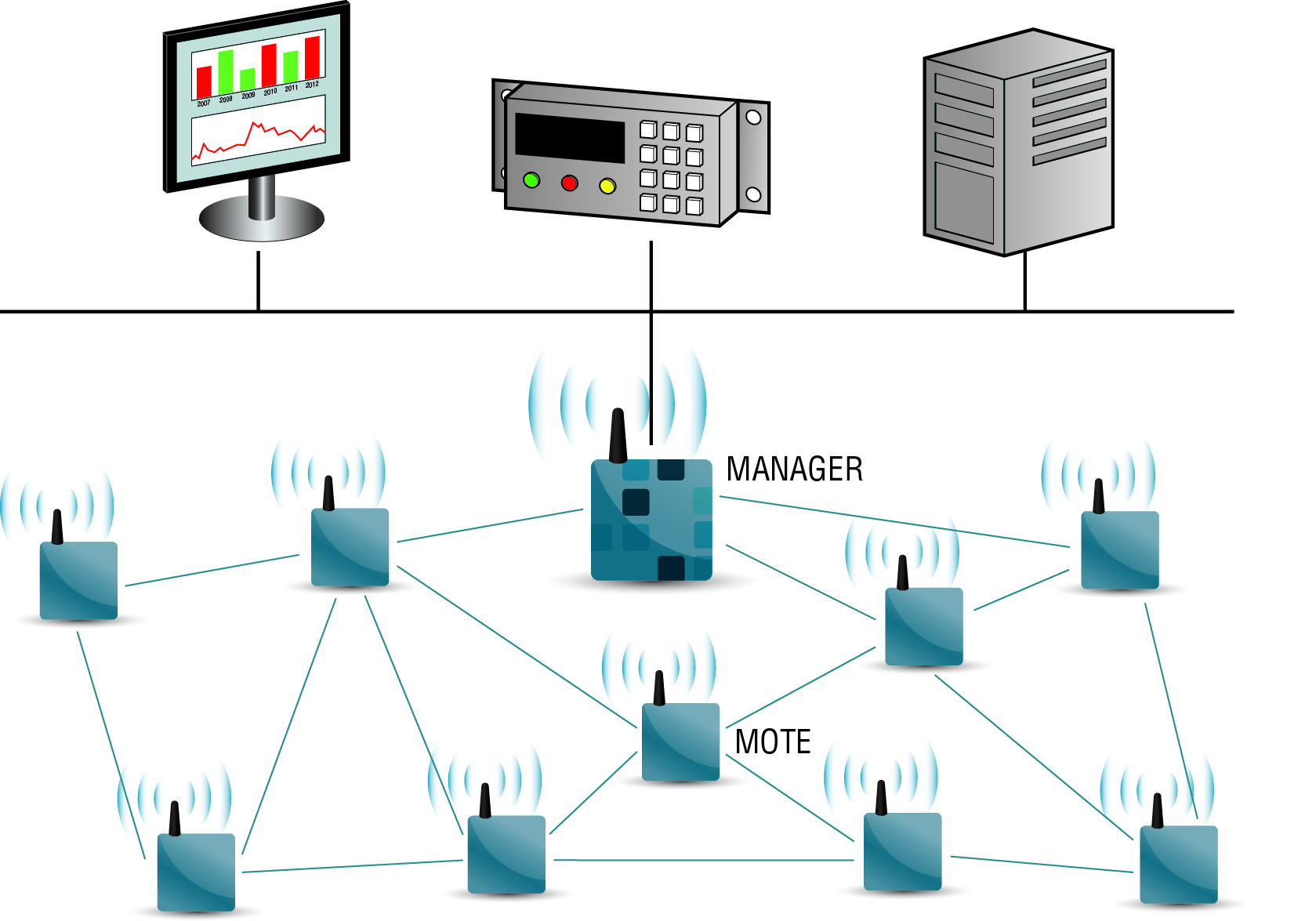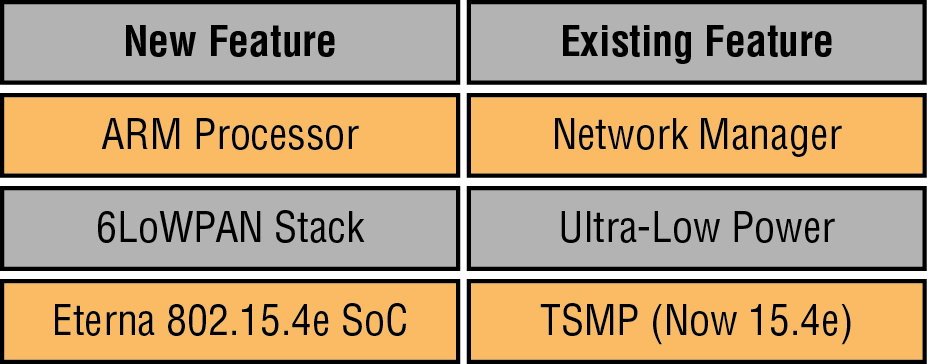Going beyond industrial wireless
The low-power wireless technology at the core of the Internet of Things has evolved in both scope and capability since its inception, but hasn’t forgotten its heritage. By Harry Forbes, ARC Advisory Group.
Designated as IEEE 802.15.4, the wireless standard that underpins ZigBee, IEC62591 (WirelessHART), ISA100 and other sensor network standards all share this technology. The original vision of 15.4 was to serve as a wireless network for low-power, low-data-rate sensors that could operate using only a small battery. Another aspect of the vision was that these devices would be too lightweight to support the TCP/IP protocols that define the Internet. Since those early days, both these aspects of the original vision have changed. Many applications using 15.4 now have access to abundant electric power (e.g., smart metering). Furthermore, it is now possible to use the Internet Protocol suite (IPV6) directly on 15.4 networks.
However, in applications where power is limited, battery life remains a major issue. To help address this, the 15.4 wireless standard now incorporates a technology called TSMP (Time Synchronised Mesh Protocol). TSMP enables devices to conserve battery power by synchronising the wake/sleep cycles, so that the devices are only ‘awake’ and consuming power when there is active communication. TSMP was developed by Dust Networks in the early days of wireless sensor network (WSN) research, before standards existed. Dust’s objective was to create a sensor network that combined low power consumption with reliable delivery (see Figure 1). Unlike conventional IT networks, in a sensor network, the reliability of any single point-to-point connection is quite low. To make end-to-end delivery of sensor information highly reliable, the sensor network as a whole must compensate for the inevitable periodic loss of point-to-point connectivity.

Figure 1 - A typical Wireless Sensor Network
Dust Networks believed that a highly intelligent network manager was the best way to add intelligence to the sensor network as a whole. The company’s architecture concentrated the complexity of an active network manager in the sensor network gateway — the home node of the sensor network. The gateway contained a powerful computer and a hard-wired power supply, so it could handle the computational ‘heavy lifting’, thus enabling the sensor nodes to be simpler (and less power hungry). Dust Networks used this combination of long battery life and reliable delivery to differentiate its first products. These properties resulted from TSMP and superior network management. Major industrial OEMs benchmarked Dust products against other sensor network technologies. Over time, Dust emerged as a clear winner in the industrial space, securing supplier relationships with major OEMs, including Emerson and GE. Unlike its many rivals in the sensor networking space, Dust’s products achieved acceptance by industrial OEMs.
Eventually, TSMP technology became part of sensor network standards. Dust continued to enhance its network management capability and also worked actively to reduce the power consumed by its products at the chip level. Dust never saw itself as a purely software company. With a ‘hidden’ differentiator of developing and managing chip-level design, it most resembles a fabless semiconductor firm. As such, Dust worked to release a second generation of products that incorporated power optimisation at the chip level. This second generation of products, released in 2007, had power levels roughly 50% lower than the products they replaced, further extending battery life for the industrial applications that demanded it (Figure 2).

Figure 2 - A timeline of Dust Networks milestones
Sensor networks
The combination of IPV6 and sensor networks resulted in watershed development, opening huge new possibilities. Sensor networks had always been envisioned as operating without the TCP/IP protocol suite, a point that became a significant liability. For example, much of the resources expended in the ZigBee initiative ended up reinventing services for 15.4 networks that had mature and standardised equivalents in the TCP/IP realm. When IPV6 became feasible for sensor networks (the combination is known as 6LowPAN) the ubiquitous TCP/IP suite became part of the available technology for sensor networks, sending the entire sensor network community back to the drawing board.
In 2011, a third-generation product line emerged from the company’s drawing boards designed to leverage IP’s new capability; SmartMesh IP is a platform that will extend into commercial markets the same advantages Dust provided industrial wireless sensors. The company made significant changes in this new product line, while deliberately maintaining several aspects (Figure 3). The line includes a new Eterna 802.15.4e system-on-chip product. The most notable difference here is that the new product includes a powerful, low-power ARM Cortex-M3 processor. Earlier Dust products had far less on-board processing power, which was appropriate for their limited functional scope. IP-based sensor networks, in contrast, will require support for multiple protocols and even applications at the sensor node itself. This includes location awareness capability, which Dust built in via an optional onboard location engine. Another big difference is that, while the product is designed for any type of network, the first supported network stack is 6LowPAN, rather than an industrial protocol. Ultra-low power consumption remains, as does Dust’s Intelligent Network Management, and new products still include TSMP. However, the new TSMP implementation complies with that defined in the latest IEEE 802 standard (15.4e).

Figure 3 - Properties of SmartMesh IP
A future scenario for WSN
ARC believes that the industrial wireless sensing market will grow rapidly at a mid-double-digit rate. Mature products incorporating international standards like IEC62591 and supported by leading suppliers will drive penetration of WSN in industrial applications. ARC believes that IEC62591 devices now dominate this market, and Dust is likely to remain the supplier of the best technology in this arena.
Beyond industrial applications, the WSN market will move toward IP, or 6LowPAN, driven by the huge advantage that stems from the adoption of TCP/IP. However, the need for ultra-low power operation will remain a major consideration in long-lived, higher-value applications requiring unattended operation to support total cost of ownership (TCO) requirements. With the addition of its new SmartMesh IP products, Dust Networks believes it is positioned as the premier supplier of WSN technology for all segments of the market. By adopting the fundamental strategy of serving applications that require higher performance than can be achieved with a commoditised WSN product, ARC expects commercial OEMs to understand and appreciate this value proposition in the same manner that industrial OEMs have embraced Dust’s earlier technology.










